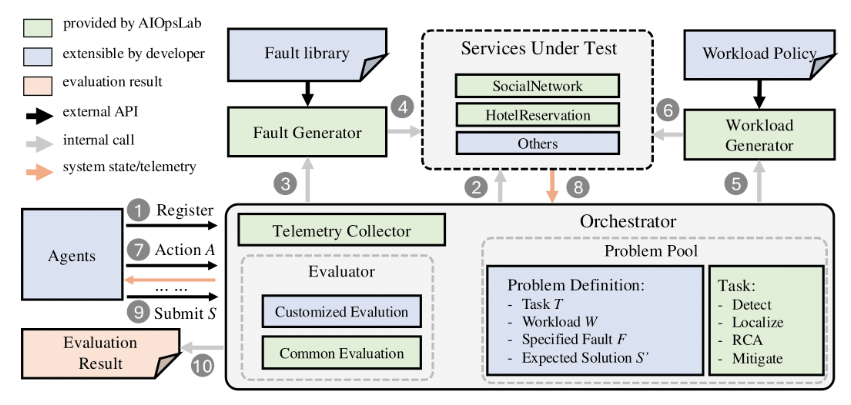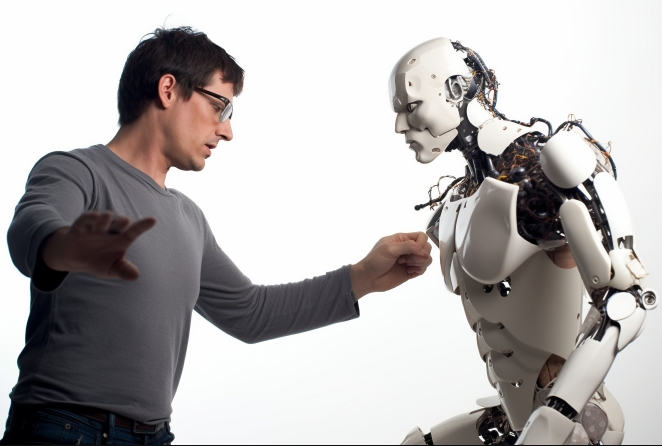Recently, Microsoft, together with research institutions such as the University of California, Berkeley, and the University of Illinois, jointly launched a project called AIOpsLab to provide an intelligent agent system for automated cloud operation and maintenance. AIOpsLab can simulate complex operational tasks in a real cloud service environment, support automatic detection, location and resolution of faults, and significantly improve the observability and operation and maintenance efficiency of cloud services.

The main function of AIOpsLab is to support the collaboration of humans and digital agents through modular design, making it easier for developers to expand applications and handle different workloads and failure scenarios. Its architecture consists of five key parts: coordinator, services, workload generators, fault generators, and observability.
The coordinator is responsible for establishing a session with the agent and sharing information about the benchmark problem. It helps agents effectively solve tasks by calling a series of documented APIs (such as obtaining logs, indicators, etc.). The coordinator can also perform operations on behalf of the agent, such as extending or redeploying services, ensuring that the agent can run smoothly in the actual environment.
The service module can adapt to a variety of real cloud service environments, such as microservices, serverless and single services. AIOpsLab also leverages the open source application suite DeathStarBench to provide researchers with a tool to reproduce and study production events in a controlled environment. In addition, by integrating tools such as Blueprint, AIOpsLab can also be extended to other academic and production services to facilitate the rapid deployment of new variants.
Workload generators play an important role in AIOpsLab and are responsible for creating simulations of normal and failure scenarios to test the performance of agents under different conditions. It generates corresponding workloads based on the coordinator's specifications, helping users test in multiple scenarios.
The fault generator is an innovative feature of AIOpsLab that can implement fine-grained fault injection in multiple cloud scenarios. This function can simulate the entire complex fault process and consider the interdependencies between microservices, providing users with comprehensive testing and evaluation capabilities.
Finally, the observability function improves AIOpsLab's comprehensive monitoring capabilities by integrating multiple monitoring tools, ensuring that users can obtain customized system information for effective management in case of possible data overload.
Open source address: https://github.com/microsoft/AIOpsLab/?tab=readme-ov-file
AI courses are suitable for people who are interested in artificial intelligence technology, including but not limited to students, engineers, data scientists, developers, and professionals in AI technology.
The course content ranges from basic to advanced. Beginners can choose basic courses and gradually go into more complex algorithms and applications.
Learning AI requires a certain mathematical foundation (such as linear algebra, probability theory, calculus, etc.), as well as programming knowledge (Python is the most commonly used programming language).
You will learn the core concepts and technologies in the fields of natural language processing, computer vision, data analysis, and master the use of AI tools and frameworks for practical development.
You can work as a data scientist, machine learning engineer, AI researcher, or apply AI technology to innovate in all walks of life.







